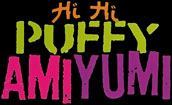


Resolution: 240 × 160 pixels (3:2 aspect ratio).Ĭolor support: 15-bit BGR (5 bits depth per channel), capable of displaying 512 simultaneous colors in "character mode" and 32,768 (215) simultaneous colors in "bitmap mode". Memory: 32 kilobyte + 96 kilobyte VRAM (internal to the CPU), 256 kilobyte DRAM (outside the CPU). 8 or 4 MHz 8-bit Z80 coprocessor for Game Boy backward compatibility. a screen light)ĬPU: 16.8 MHz 32-bit ARM7TDMI with embedded memory. Screen: 2.9 inches reflective thin-film transistor (TFT) color LCD.īattery life: approximately 15 hours on average while playing Game Boy Advance games (also dependent on the Game Pak being played, volume setting and any external peripherals being used - e.g. The technical specifications of the original Game Boy Advance are, as provided by Nintendo: Main article: Comparison of Nintendo portable consoles It was announced that Nintendo of Japan was working on a game for the system called "Mario's Castle".

It also may have referred to the unnamed, unreleased Game Boy Color successor prototype that was revealed at 2009's Game Developers Conference. Although Nintendo's expectations of releasing the system in at least one territory by the end of 1996 would make that machine seem to be the Game Boy Color, it was described as having a 32-bit RISC processor, a 3-by-2-inch color LCD screen, and a link port-a description that more closely matches the Game Boy Advance. In 1996, magazines including Electronic Gaming Monthly, Next Generation, issues 53 and 54 of Total! and the July 1996 issue of Game Informer featured reports of a new Game Boy, codenamed Project Atlantis. The Game Boy Advance was designed by the French designer Gwénaël Nicolas and his Tokyo-based design studio Curiosity Inc. Its successor, the Nintendo DS, was released in November 2004 and is also compatible with Game Boy Advance software.Ĭontrary to the previous Game Boy models, which were all following the "portrait" form factor of the original Game Boy (designed by Gunpei Yokoi), the Game Boy Advance was designed in a "landscape" form factor, putting the buttons to the sides of the device instead of below the screen.

Despite the competitors' best efforts, Nintendo maintained a majority market share with the Game Boy Advance.Īs of June 30, 2010, the Game Boy Advance series has sold 81.51 million units worldwide. Nintendo's competitors in the handheld market at the time were the Neo Geo Pocket Color, WonderSwan, GP32, Tapwave Zodiac, and the N-Gage. It was released in Japan on March 21, 2001, in North America on June 11, 2001, in Australia and Europe on June 22, 2001, and in mainland China on J(as iQue Game Boy Advance). The Game Boy Advance (GBA) is a 32-bit handheld video game console developed, manufactured and marketed by Nintendo as the successor to the Game Boy Color. Memory 32 KB internal, 256 KB external, 96 KB VRAMĭisplay TFT LCD, 240×160 pixels, 40.8×61.2 mmīest-selling game Pokémon Ruby and Sapphire, 16 million combined Units sold 81.51 million (as of June 30, 2010)ĬPU ARM7TDMI 16.78 MHz, Zilog Z80 8 or 4 MHz The indigo version of the Game Boy Advance. Game Boy Advance Gameboy advance logo.svg For other uses, see GBA (disambiguation).


 0 kommentar(er)
0 kommentar(er)
